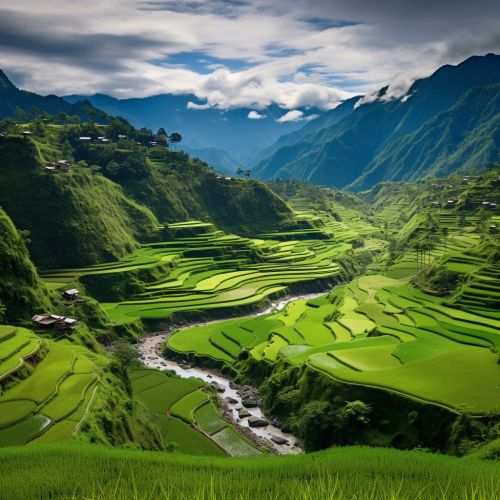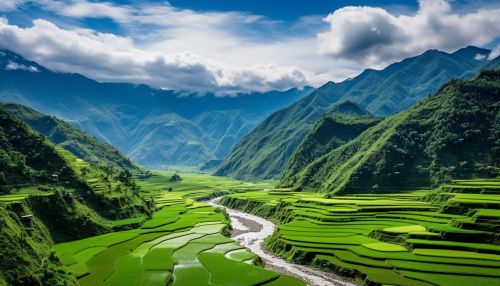Agriculture in the Philippines
History
Agriculture in the Philippines has a long and storied history, with evidence of rice terraces dating back over 2000 years. The country's tropical climate and fertile soil have made it an ideal location for agricultural activities for centuries. The Spanish colonization in the 16th century brought new crops and farming methods, which further diversified the agricultural landscape of the country.


Crops
The Philippines is known for its diverse range of crops. The primary crops include rice, corn, coconut, sugarcane, banana, pineapple, and mango. The country is one of the world's top producers of coconuts and pineapple.
Rice
Rice is the staple food of the Philippines and is therefore its most important crop. The country is the 8th largest rice producer in the world. The International Rice Research Institute, located in the Philippines, is a leading institution in the development of new rice varieties and farming techniques.
Coconut
The Philippines is the world's largest producer of coconuts, contributing to over 25% of global production. The coconut industry is a major source of income for many Filipino farmers, with the crop being used for its oil, milk, water, and flesh.
Banana
The Philippines is the second largest exporter of bananas in the world. The banana industry is a significant contributor to the country's economy, providing employment for thousands of Filipinos.
Livestock and Poultry
Livestock and poultry farming also play a crucial role in the agricultural sector of the Philippines. The country is a significant producer of chicken, pig, and cattle. The livestock and poultry sector contributes to the country's food security and provides livelihood to many Filipinos.
Fishing
The Philippines, being an archipelago, has a vibrant fishing industry. The country's waters are rich in marine life, making it one of the top fish-producing countries in the world. The fishing industry contributes significantly to the country's food supply and economy.
Agricultural Policy and Institutions
The Department of Agriculture (DA) is the principal agency responsible for the promotion of agricultural development in the Philippines. Other important institutions include the Philippine Rice Research Institute and the Bureau of Fisheries and Aquatic Resources.
Challenges and Opportunities
Despite its potential, the agricultural sector in the Philippines faces several challenges. These include land degradation, climate change, and inadequate infrastructure. However, there are also opportunities for growth and development, such as the adoption of sustainable farming practices and the use of technology in agriculture.
